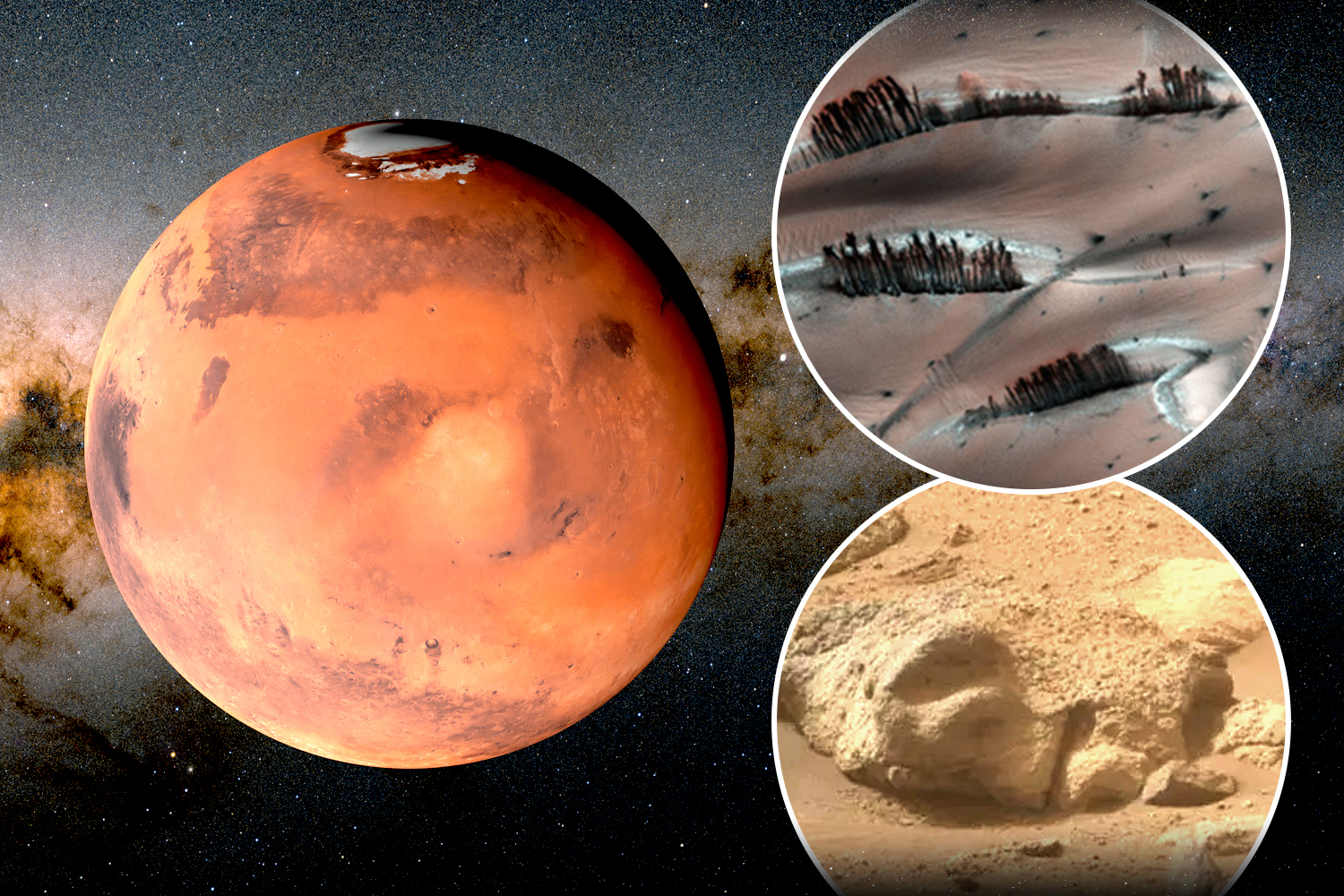THE famously desolate Mars landscape could be scattered with trees to the untrained eye, according to a recently shared Nasa image.
However, the US space agency was quick to explain otherwise.
6
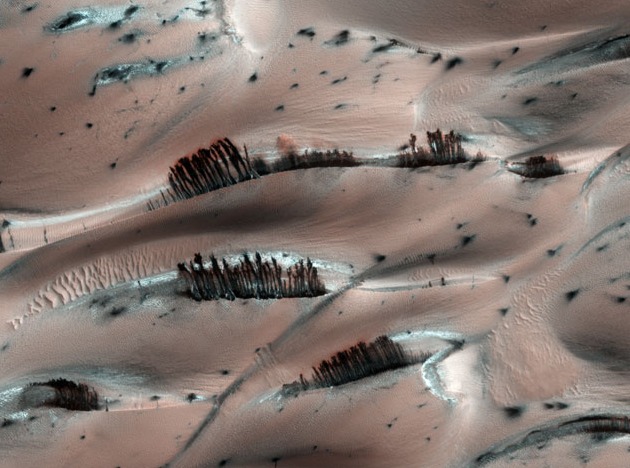
6
“Are these trees growing on Mars? No,” Nasa said, as it re-shared the image first snapped in 2008.
“Groups of dark brown streaks have been photographed by the Mars Reconnaissance Orbiter on melting pinkish sand dunes covered with light frost.“
The Mars Reconnaissance Orbiter, which had been in space just two years before taking the shot, was able to capture dark sand on the interior of Martian sand dunes – giving the illusion of trees.
These tree-like dark streaks of sand are located near Mars’ North Pole – which are usually covered in a layer of carbon dioxide ice in the winter.
The dark sand had become more visible during the Martian spring, when the Sun melted the lighter carbon dioxide ice on the surface of the sand.
“When occurring near the top of a dune, dark sand may cascade down the dune leaving dark surface streaks – streaks that might appear at first to be trees standing in front of the lighter regions but cast no shadows,” explained Nasa.
“Objects about 25cm across are resolved on this image spanning about one kilometer.
“Close ups of some parts of this image show billowing plumes indicating that the sand slides were occurring even while the image was being taken.“
But they’re not the only bizarre-looking specimens located in Mars’ faraway sands.
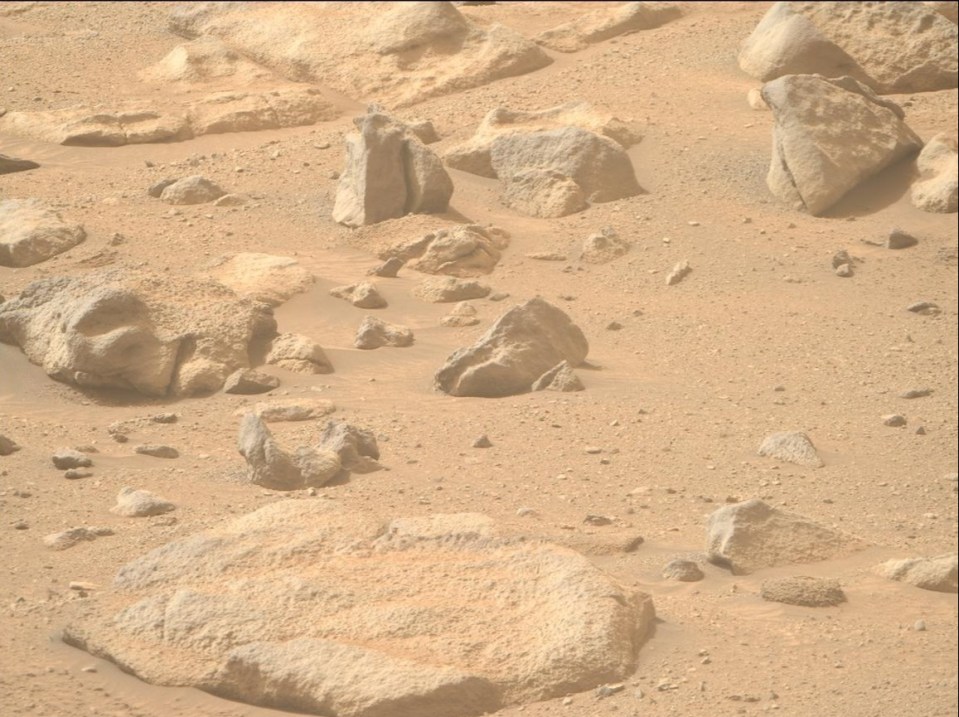
6
A buried face
What looks like a grisly, sun-scorched human face has also been discovered half-buried on Mars by Nasa’s Perseverance rover.
The image, taken by the rover in September, appears to show a sandy face with a large brow bone, nostrils and a sloping mouth on the left side.
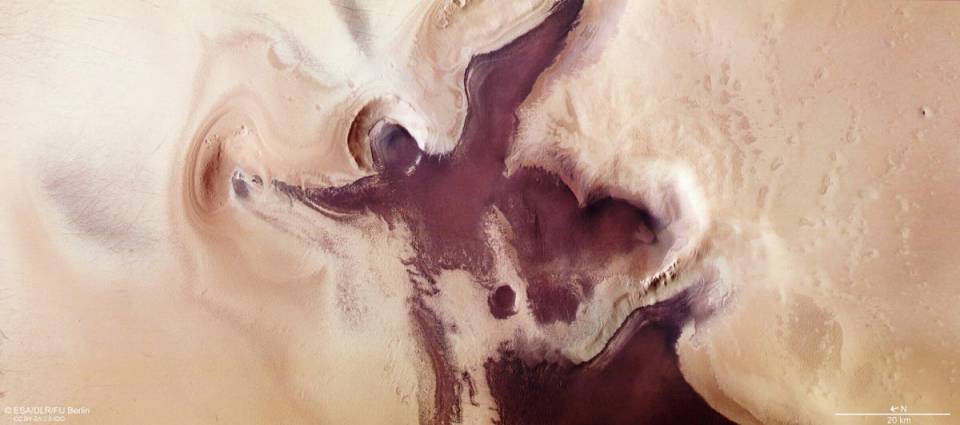
6
South Pole ‘angel’
On the opposite side of the planet to Mars’ mysterious ‘trees’, lies an ‘angel’ in the Martian regolith.
Snapped by the European Space Agency’s (ESA) Mars Express, this image of the Red Planet’s South Pole seems to show an angel and a heart together.
ESA described it as an “angelic figure” in a December 2020 image release – although its caused by the same melting of ice that prompted tree-like illusions in the North Pole sand.
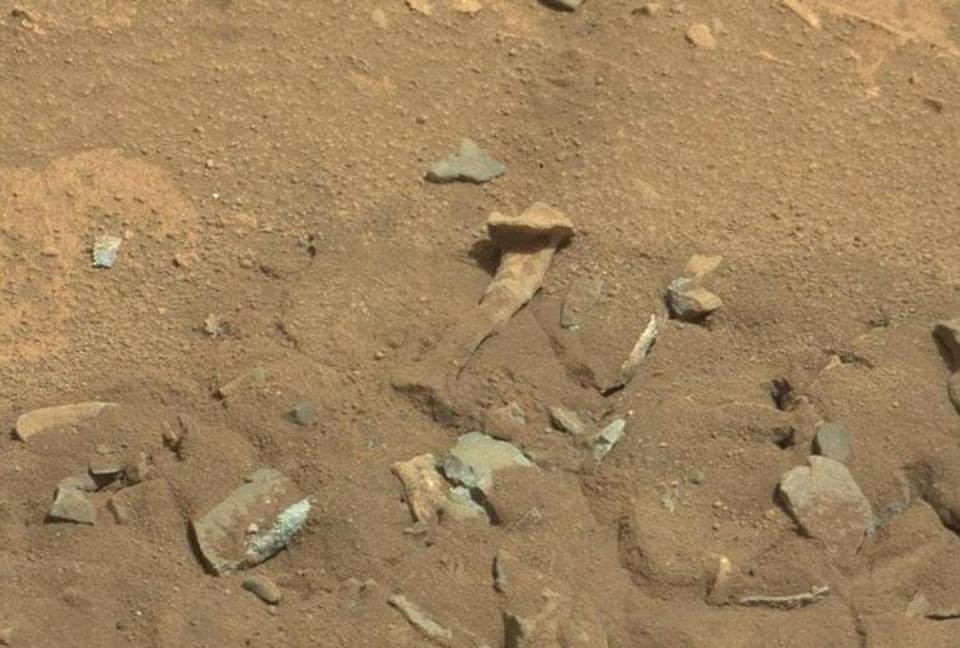
6
Martian bone
In 2014, Nasa’s Curiosity rover sent a photo back to Earth with what looked like a femur bone from a human thigh in the sand.
Of course, it was just a strangely shaped rock – and not quite proof of aliens.
Scientists at the time said the unusual shape was most likely the product of erosion by wind or water.
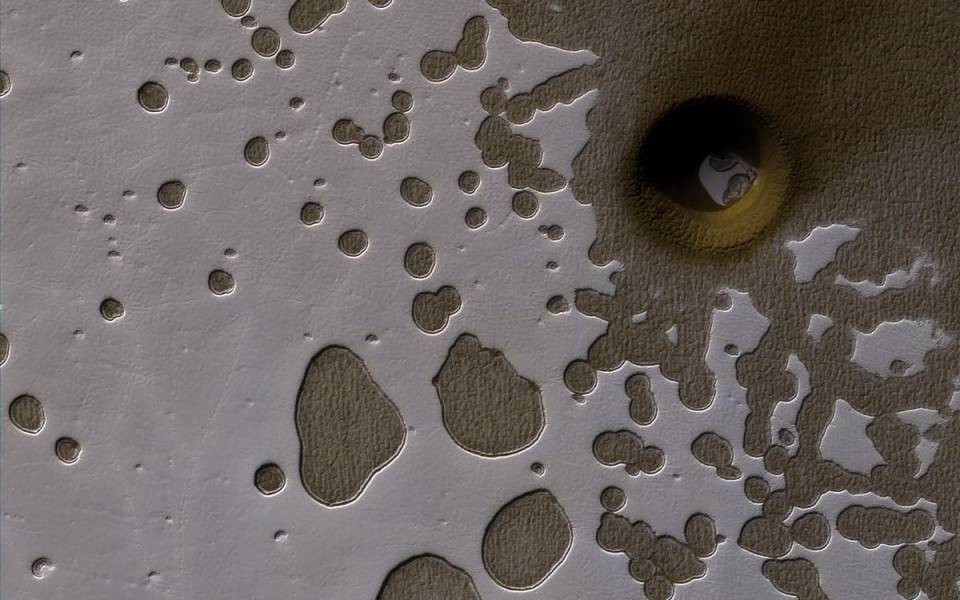
6
Deep pit
This deep and oddly circular pit on Mars could lead to an extensive network of underground tunnels that may be harbouring alien life, according to Nasa.
Scientists captured the image of the hole from orbit at the Martian South Pole in 2017.
While Nasa doesn’t have any definitive answers on this odd round pit, the circular formation is likely a collapse pit or an impact crater.
Mars facts
Here’s what you need to know about the red planet…
- Mars is the fourth planet from the Sun
- It is named after the Roman god of war
- The landmass of Mars is very similar to Earth but due to the difference in gravity you could jump three times higher there than you can here
- Mars is mountainous and hosts the tallest mountain known in the Solar System called Olympus Mons, which is three times higher than Everest
- Mars is considered to be the second most habitable planet after Earth
- It takes the planet 687 Earth days to orbit the Sun
- The planet has a diameter of 4,212 miles, and has an average distance from Earth of 140 million miles
- Martian temperatures can vary wildly, reaching as high as 70F/20C or as low as -225F/-153C
